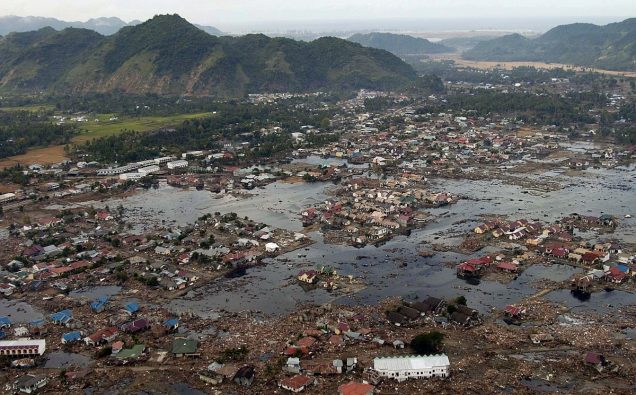
The United Nations has issued a stark warning on dangers of the climate events – nearly half of the world could face more natural disasters like flooding, storms, and tsunamis by 2030.
“We can build on the progress achieved, ranging from better outreach to tsunami-exposed communities around the world, to the inclusion of a tsunami program in the UN Decade of Ocean Science for Sustainable Development,” UN Secretary-General Antonio Guterres said.
In a message marking the 2021 World Tsunami Awareness Day, Guterres urged the international community to raise awareness about these threats and share measures to decrease risks.
Tsunamis are rare events but can be extremely deadly, the UN says. In the past 100 years, 58 of them have claimed more than 260,000 lives or an average of 4,600 per disaster – more than any other natural hazard.
The highest number of deaths occurred in the Indian Ocean tsunami of December 2004, which caused an estimated 227,000 fatalities across 14 countries. Indonesia, Sri Lanka, India, and Thailand were the hardest hit.
The UN Chief’s call for action came as the world seeks to arrest the declining climate worldwide through a range of measures including curb on the emission of gases, and restraint on the use of carbon fuels.
Alluding to the climate and global warming issues, Guterres said:
“Rising sea levels caused by the climate emergency will further exacerbate the destructive power of tsunamis.”
“We must limit warming to 1.5 degrees over pre-industrial averages and invest at scale in the resilience of coastal communities.”
Rapid urbanization and growing tourism in regions prone to tsunamis are also putting even more people in harm’s way.
For the UN chief, science, international cooperation, preparedness, and early action must be at the center of all efforts to keep people and communities safer.
“Boosting support to developing countries and improving detection and early warning is critical. In the face of increasingly complex global crises, we need to be better prepared”, he said.
In 2021, World Tsunami Awareness Day is promoting the ” Sendai Seven Campaign,” specifically the target that looks to enhance international cooperation to developing countries.
Just three weeks after the 2004 disaster, the international community came together in Kobe, Japan, and adopted the 10-year Hyogo Framework for Action, the first comprehensive global agreement on disaster risk reduction.
They also created the Indian Ocean Tsunami Warning and Mitigation System, which uses seismographic and sea-level monitoring stations to send alerts to national tsunami information centers.
After the Hyogo Framework for Action expired, in 2014, the world adopted the Sendai Framework for Disaster Risk Reduction 2015-2030, outlining seven clear targets and four priorities to prevent and reduce disaster risks.


















[…] Half of the world could face flooding, storms, tsunamis by 2030 – UN […]